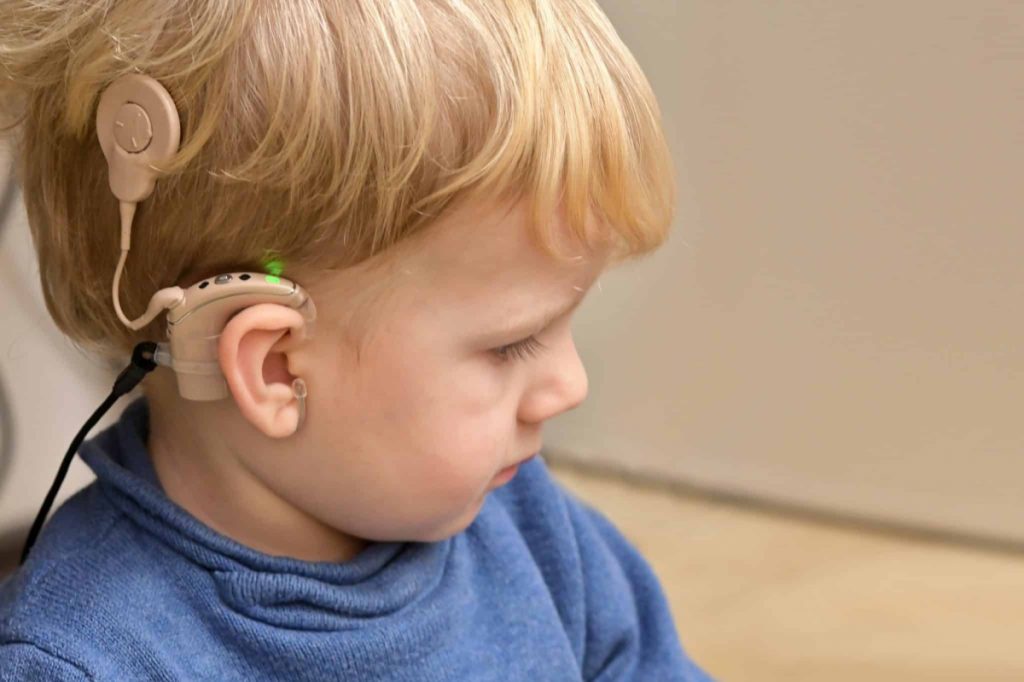Medical Magnet Spotlight: Magnets and Cochlear Implants
By Paul Fears | 05 December 2022
Magnets feature in a wide range of medical applications including heart pumps, surgical tools, hearing aids, and cochlear implants. A cochlear implant is a surgically implanted neuroprosthesis that provides a person who has moderate-to-profound sensorineural hearing loss with sound perception. Unlike hearing aids, which amplify sounds, cochlear implants bypass damaged areas of the ear and directly stimulate the auditory nerve. The signals generated by the cochlear implant travel along the auditory nerve to the brain, which processes these signals as sounds. As of December 2019, there are more than 736,000 registered cochlear implant users worldwide (National Institute on Deafness and Other Communication Disorders).

Magnets and Cochlear Implants
Cochlear implants consist of external and internal components, which both use magnets. The external headpiece is worn in a similar manner to a hearing aid but operates very differently. The external hardware consists of three parts: the microphone, a speech processor, and a transmitting coil.
The internal device has two parts: the receiver or stimulator and the intra-cochlear electrode array.
The optimum transmission of sound to the internal device relies on the precise location of the external headpiece, or coil, on the skull. A surgeon inserts the internal device, which features a Samarium Cobalt (SmCo) magnet (approximately 18mm diameter), just underneath the scalp. The magnet does not support the weight of the external headpiece on the head, but securely aligns the external headpiece with the internal components of the implant. Samarium Cobalt is a very stable rare earth magnet with strong magnetic properties and good resistance to corrosion.
The strength of the Samarium Cobalt ring magnet is critical. The magnetic strength needs to be strong enough to securely hold the external headpiece, but not too strong to cause issues such as injury to the scalp (e.g. redness, swelling, etc) which raises the risk of infection.
Bunting’s magnet application engineers work closely with cochlear implant manufacturers to identify the optimum strength and size of the permanent magnet mounted underneath the scalp. Samarium Cobalt magnets ring magnets also form the heart of the speaker system within the implant, along with Neodymium Iron Boron magnets in the speaker mounted in the external headpiece.
The specification of the Samarium Cobalt magnets in the speaker system is critical. To produce the optimum performance, the magnets must not be too strong as they would not create the right sound. Conversely, magnets that are too weak would not work. This critical specification demands 100% inspection at Bunting, with every magnet checked and tested in the onsite technical department using a 2D Helmholtz coil.
Cochlear implant design continues to evolve and improve, with designers closely watching advances in permanent magnet technology.
Bunting’s custom-designed magnets and magnetic assemblies feature in a wide range of medical technologies. The UK-based magnet design team works with medical equipment engineers on a wide range of technology and applications.
Related Technical Article
- Medical Device Manufacturer Awards Bunting Top Supplier Performance
- XGS33 Expands Bunting’s Samarium Cobalt Magnets Range
Magnet and Magnet Assembly Design
Bunting designs and manufactures a wide range of magnet setters, magnetisers, magnets and magnetic assemblies. Many are bespoke for specific applications. For further information on any of the products mentioned in this article, or for bespoke magnet assemblies and magnet designs, please contact us via:
Phone: +44 (0) 1442 875081
Email: sales.berkhamsted@buntingmagnetics.com
Via Bunting-eMagnets for online purchase of Magnets and Magnetic Technology
Follow us for all our latest news on Social Media



